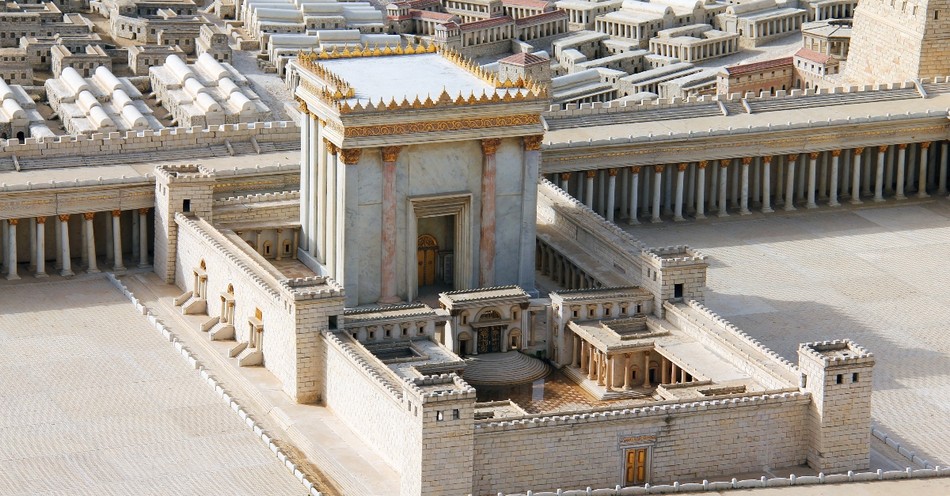Often, when I read the Bible, the text mentions a place or gives a name that has no meaning for me. I was raised in a different culture and language, thousands of years from the original writing. These books and letters were written to audiences of their day. The Holy Spirit inspired these authors in these writings, so we can learn from them today. However, the writers often mention places or people known to their contemporary audiences, but that need more explanation for us today.
For example, if I reference the movie "Back to the Future," whether we like the movie or not, most people would recognize the characters, scenes, or quotes quickly. Other audiences would be confused. Why would I mention Marty McFly?
The Bible is full of these references. With decades or centuries of scholarship and record keeping, we can research and learn more about them. Instead of being confused or skipping them, we can find the deeper meaning intended by the Holy Spirit and the human authors.
The apostle John records a longer teaching by Jesus and mentions the place—Solomon’s Porch. Solomon’s Porch (also called Solomon’s Colonnade or Portico), is a unique location mentioned several times in the Bible. Though briefly referenced, it holds historical and spiritual significance that connects both the Old and New Testaments. Understanding what it was and why it mattered offers insight into the setting of key biblical events.
Where Does the Bible Talk about Solomon’s Porch?
The Bible mentions Solomon’s Porch three times in the New Testament. First, during Jesus’ teaching in John 10:23, next in Acts 3:11 and 5:12.
For the context of John 10, Jesus walks in Solomon’s Porch during the Feast of Dedication, or what we would call Hanukkah. The apostle John reveals how Jesus’ conversations with the religious leaders become more intense, and the Jewish priests and scribes find problems with Christ’s teachings. The other Gospels also highlight this, and John 10 focuses on how Jesus declares his identity clearly to the general population and his disciples. On Solomon’s Porch, Jesus takes questions and answers them to show who he was, the Son of God and the Messiah. These truths resulted in faith in some and resistance in others.
In Acts 3:11, Solomon’s Porch becomes the place where people gathered after a miracle. Peter and John encounter a lame man at the Temple’s Beautiful Gate, and they heal him. Afterwards, he leaps with joy, praising God, and more people show up, amazed. Luke writes how this crowd gathered on Solomon’s Porch, an obvious place for a crowd, and Peter preaches once again to them, seeing many saved and brought into the church.
Acts 5:12 further mentions how God did many signs and wonders through the apostles in the church and the people. The faith community “were all with one accord in Solomon’s Porch,” revealing how the new-born church used the portico as a regular place to hold services and teaching, a very public and well-known place, boldly declaring the resurrected Christ and repentance unto the Father through the Son.
What Is the Historical Significance of Solomon’s Porch?
Solomon’s Porch was a covered walkway on the eastern side of the Jewish Jerusalem Temple. It had a long row of columns that supported a roof and formed a shaded gathering space in the open air. Sources describe it as a place common for teaching and gathering within the temple courts. The Jews attached Solomon’s name to it, but it probably wasn’t part of his original temple structure. Rather, the porch was later built and given Solomon’s name to honor him as the builder of the original Temple.
The Babylonians destroyed the original Temple in 586 BC, part of the Jewish exile, as a consequence of their sin and rebellion. When the Jewish exiles were allowed to return during the Persian Empire, they rebuilt the Temple under Zerubbabel, but it wasn’t as extensive as Solomon’s original one. Later, King Herod started a huge renovation and expanded the Temple around 20 BC. We call this the Second Temple. During this time, the Jews likely built Solomon’s Porch. Scholars believe Herod reconstructed a portico on the eastern side where Solomon’s original colonnade once stood. Therefore, they called it Solomon’s Porch to symbolize a restoration of faith and Jewish religious life.
While Herod wasn’t very popular, or a Jew, Solomon’s Porch became a main feature of the Second Temple. The prominent Jewish historian Josephus mentions the porticos and colonnades around the Temple in his records, as well as the Gospels and Acts. The location made it a great public place to gather and teach.
Unfortunately, all we have are writings about Solomon’s Porch. In AD 70, the Romans destroyed the Temple and Jerusalem during the Jewish revolt. They demolished the Temple complex and left only part of the western wall, what we today call the Western or Wailing Wall. Solomon’s Porch, like the rest of the Temple, was lost and never rebuilt.
How Did the Setting of Solomon’s Porch Connect to Jesus’ Teaching?
John 10 details a major teaching in Jesus’ ministry. He talks openly about his identity as the Good Shepherd and the Son of God, one with the Father. He reveals himself as the Messiah and the giver of eternal life. He taught in a specific setting—Solomon’s Porch and during the Feast of Dedication, or Hanukkah. This gives us historical and theological depth and complexity to Jesus’ words.
The Jews saw Solomon's Porch as a place of connection between Israel’s past, between the original Temple of Solomon and the Second Temple rebuilt by the returning exiles during the Persian Empire and Herod’s expansion. Rabbis would regularly teach there, and crowds would come to hear doctrine. At the same time, since the portico was on the outskirts of the Temple, all people could gather—Jews, Gentiles, men, and women. By choosing this location, Jesus both connected his teaching to the Old Testament, especially Kings David and Solomon, and expressed a new way forward in which God’s hope was available to all who would believe in him, making it essential to declare exactly who they were believing in: the Messiah.
The holiday also matters. “Then came the Feast of Dedication at Jerusalem. It was winter, and Jesus was in the temple courts walking in Solomon’s Colonnade” (John 10:22). Hanukkah (or the Feast of Dedication, remembered the rededication of the Second Temple after the desecration and abomination by Antiochus IV Epiphanes in the second century BC. Hanukkah honors the Maccabean revolt, which fought to restore the purity of worship in the Jewish Temple. The Jews of Jesus’ day celebrated the Feast of Dedication as one of light, victory, and a renewed faith. The Maccabees saved Judaism and the Temple from “false shepherds,” bad religious actors who would bring the unclean into the holy place, and imperial oppressors. During the exile period, prophets spoke about bad shepherds and how God himself would become the shepherd they needed (for example, Ezekiel 34 and Jeremiah 23:1-5). Here in John 10, Jesus declares himself the true Shepherd set apart by the Father.
Jesus says, “My sheep listen to my voice; I know them, and they follow me. I give them eternal life, and they shall never perish.” Along the lines of Ezekiel and Jeremiah, he contrasts himself with the failed leaders of Israel. Christ’s voice will call the hearts of God’s people. He then promises them eternal security and care: “No one will snatch them from my hand.” (John 10:27-28) Then Jesus claims, “I and the Father are one” (John 10:30). This angers the Jews, and they pick up stones to kill him for blasphemy, not understanding the Old Testament Messianic prophecies.
Further, by teaching on Solomon’s Porch during a time celebrating the salvation of the Temple from the unclean, Jesus taught how he himself was and would be the true fulfillment of the temple’s purpose—the dwelling place of God, the source of eternal life, and the one who gives light to the world. Remember, the Hanukkah story tells us lights and oil miraculously lasted days longer than expected. Jesus is that light.
How Did the Setting of Solomon’s Porch Connect to the Birth of the Church in Acts?
Moving into the early part of Acts, since the filling of the Spirit and the birth of the church happened in Jerusalem, Acts 3 and 5 mention Solomon’s Porch as a main gathering place for the apostles and early disciples. Beyond being convenient and common, the place expresses the reality of the Gospel and God’s heart.
The apostles and first disciples were largely Jewish, so the colonnade connected their movement to the story of Israel that came before. By gathering there, the leaders honored their spiritual heritage, as Christ had done, while preaching the new covenant and Messianic fulfillment of the Kingdom in Christ. The new covenant wasn’t a break from the old but a continuation of the same story.
Unlike the inner courts of the Temple, which restricted Gentile and women’s access under threat of death by stoning, Solomon’s Porch stayed open to everyone. Not only Gentiles and women, but the lame, the sick, and more could all gather there, and God responds by many healings of grace and power in Acts 5. This portico made it ideal for the apostles to preach the message of Jesus without dividing the people into classes or races. Everyone stood together in a place that revealed the inclusive nature of Jesus’ Gospel, the new covenant, and the Kingdom of God. From day one, the Gospel broke down barriers and declared salvation in Christ was for everyone, any who would believe.
And it was public. Crowds gathered daily, believers and nonbelievers, and they witnessed miracles and heard apostolic teaching. Since Solomon’s Porch was big and open, the early church could give witness boldly and visibly. People couldn’t deny God was doing something powerful. The apostles had confidence the message would change hearts. They didn’t hide or keep it secret.
Finally, Jesus taught us that the world would know we belonged to him by our love for one another (John 13:34-35). Not only did the apostles teach publicly, and miracles happened, but the new church lived out loving each other where people could see. The whole community became a witness to the power of God, different groups caring for each other as family, welcoming everyone. This wasn’t a secret society but one of radical inclusion through Jesus, sharing truth and grace in a city that had rejected and crucified the Messiah. Solomon’s Porch became a powerful place where the new temple, the church, was built publicly by the Spirit.
Peace.
Photo Credit: ©iStock/Getty Images Plus/flik47




